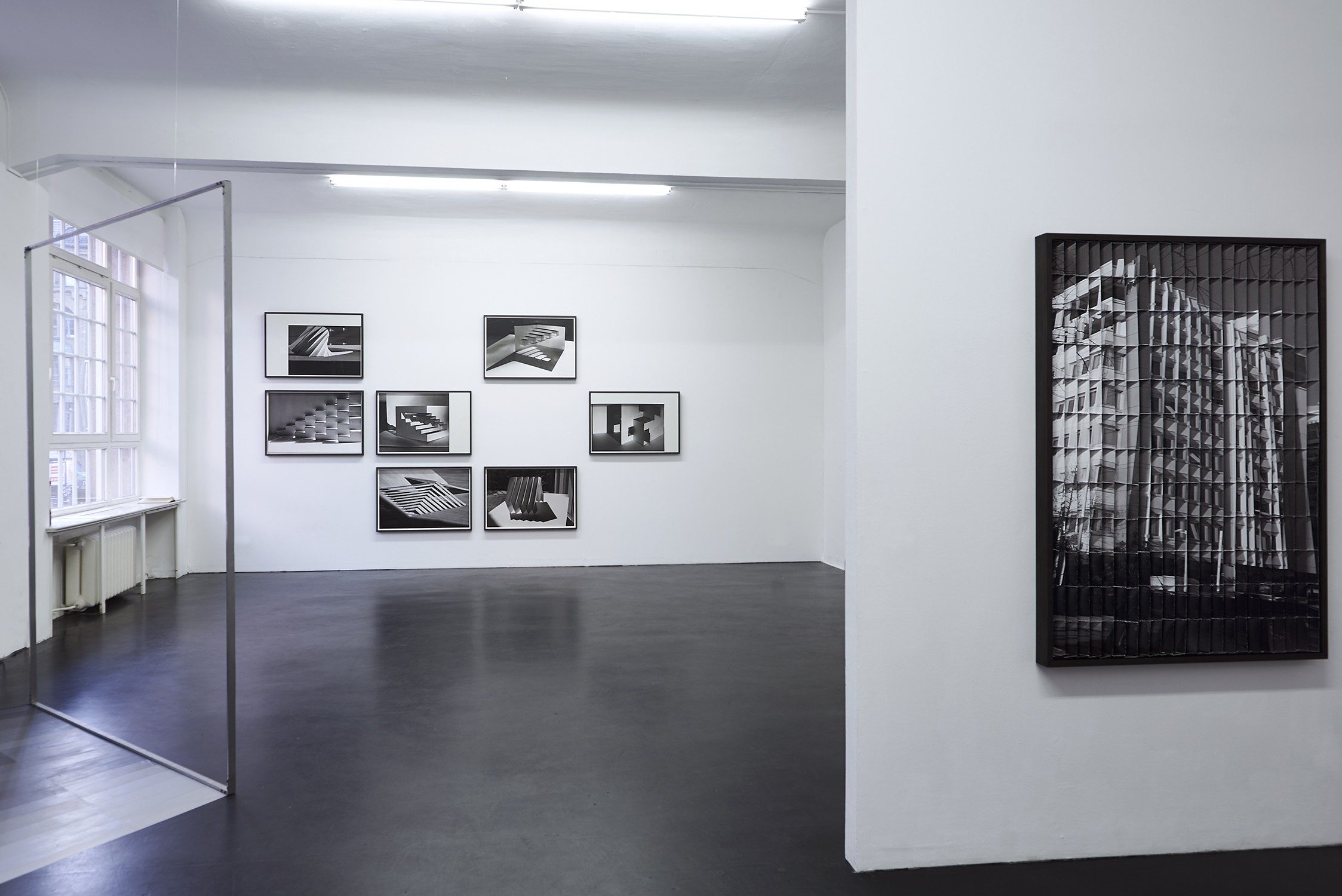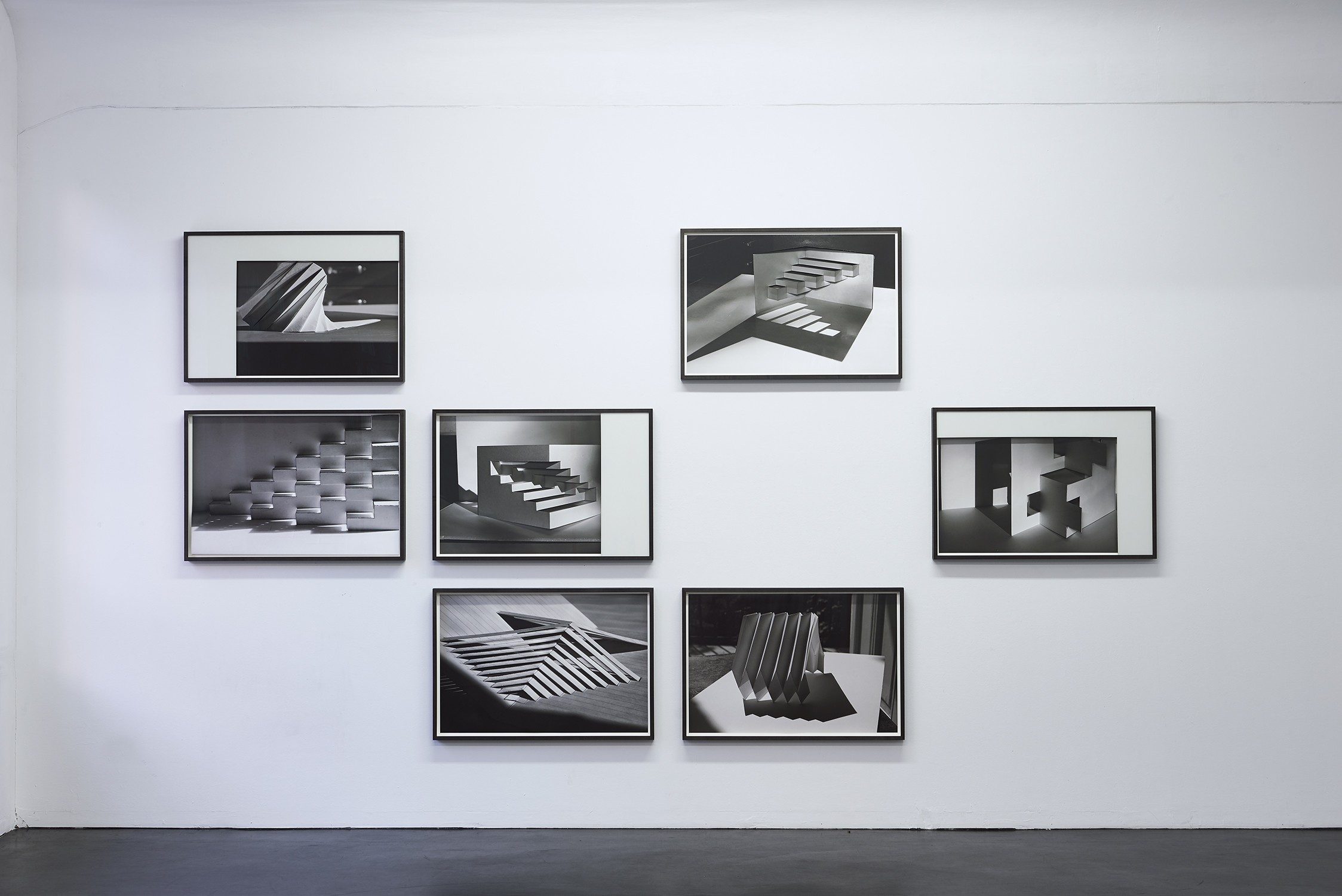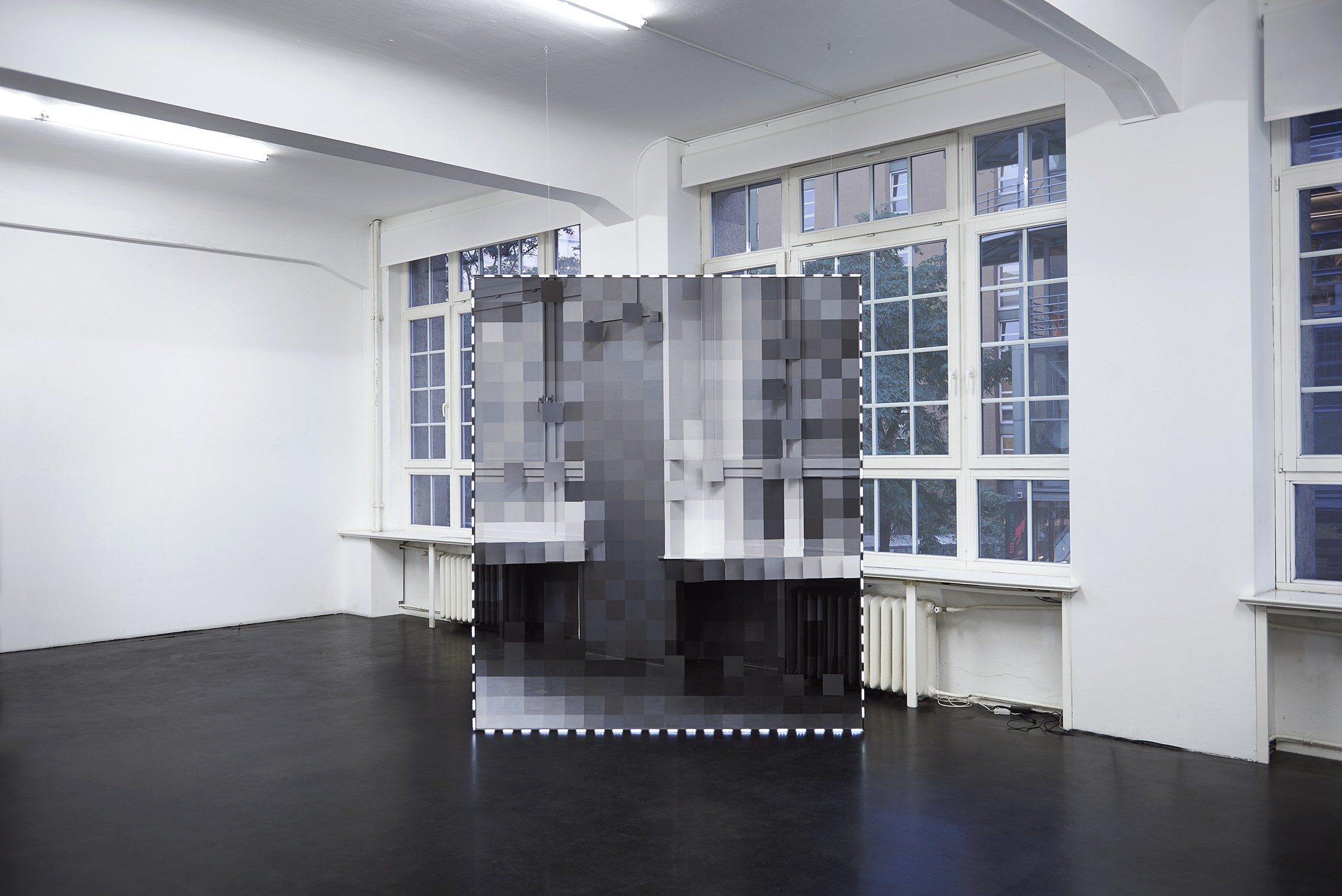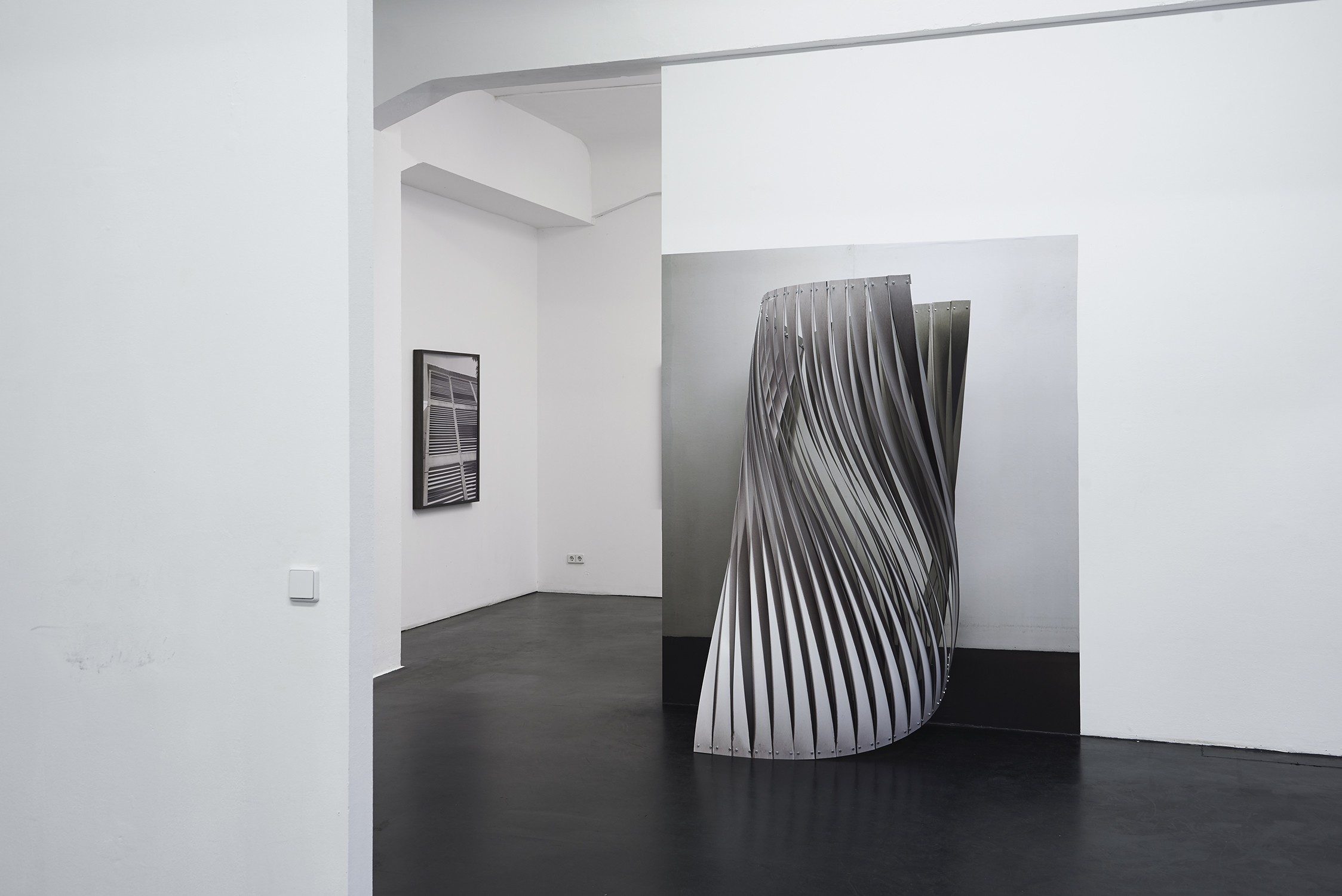



“In addition to the spatial dimension, the construction of an image toward a standpoint also has a time-based dimension. It is as if one is in a virtual world in which the room moves around the viewer instead of the viewer in the room. Now it is as if one had stopped time, which in turn makes it possible to leave the false construction of reality”. (Sinta Werner)
Sinta Werner allows us to see something that turns out to be something different than it appears at first glance. This also applies to Konstruktion im Augenblick (Construction in the Moment), the centerpiece relating particularly to the gallery space in the exhibition Die Variable des Raums (The Variable of Space) at alexander levy. A frontal view of a rectangular frame presenting an enlarged Photoshop selection field standing diagonally in the room results in a roughly pixelated image that shows the section of the window front located behind it. The horizontally and vertically oriented rasterization of the pixels awakens associations with the structure of the window frames, but is, however, distorted in terms of perspective, in an apparent contradiction with the squareness of the windows. The rasterization only appears undistorted when one looks through the frame. Individual pixels are mounted on the surfaces as cardboard squares, and are aligned to the central visual focus, which is reminiscent of the behavior of plants that turn towards the sun. As with the classical central perspective, the construction of the illusion refers to a fixed viewer standpoint. Sinta Werner incorporates the possibilities of digital image and spatial construction into the “old” analog world. This installation has the most important point of contact with Sinta Werner’s photo collages so far.
In addition to the site-specific work, Sinta Werner’s newest collages will be presented, which are mostly based on the photographs of modern buildings. Through incisions and expansions into the realm of the relief, the motif appears double or several perspectives are lodged together with one another. The series Die Variable des Raums (The Variable of Space), on the other hand, is based on three-dimensional objects resulting from cuts and folding of solid sheets of paper. The collages convey the impression of architecture models, primarily through the use of right angles and hard shadows. A photo of this “model” is then once again printed on solid paper. The paper thus becomes both the carrier material and the motif, a folded model as a print template and a three-dimensional object itself.
Thus, a “perforation” of the space or superimposition of real and imagined space takes place, a nearly paradox enmeshment of physical reality and artistic appearance. The doubled folding and the photographic reproduction result in an irritating game of deception in which the image of the physical and spatial presence is drawn into a paradox spiral.
Text: Ludwig Seyfarth